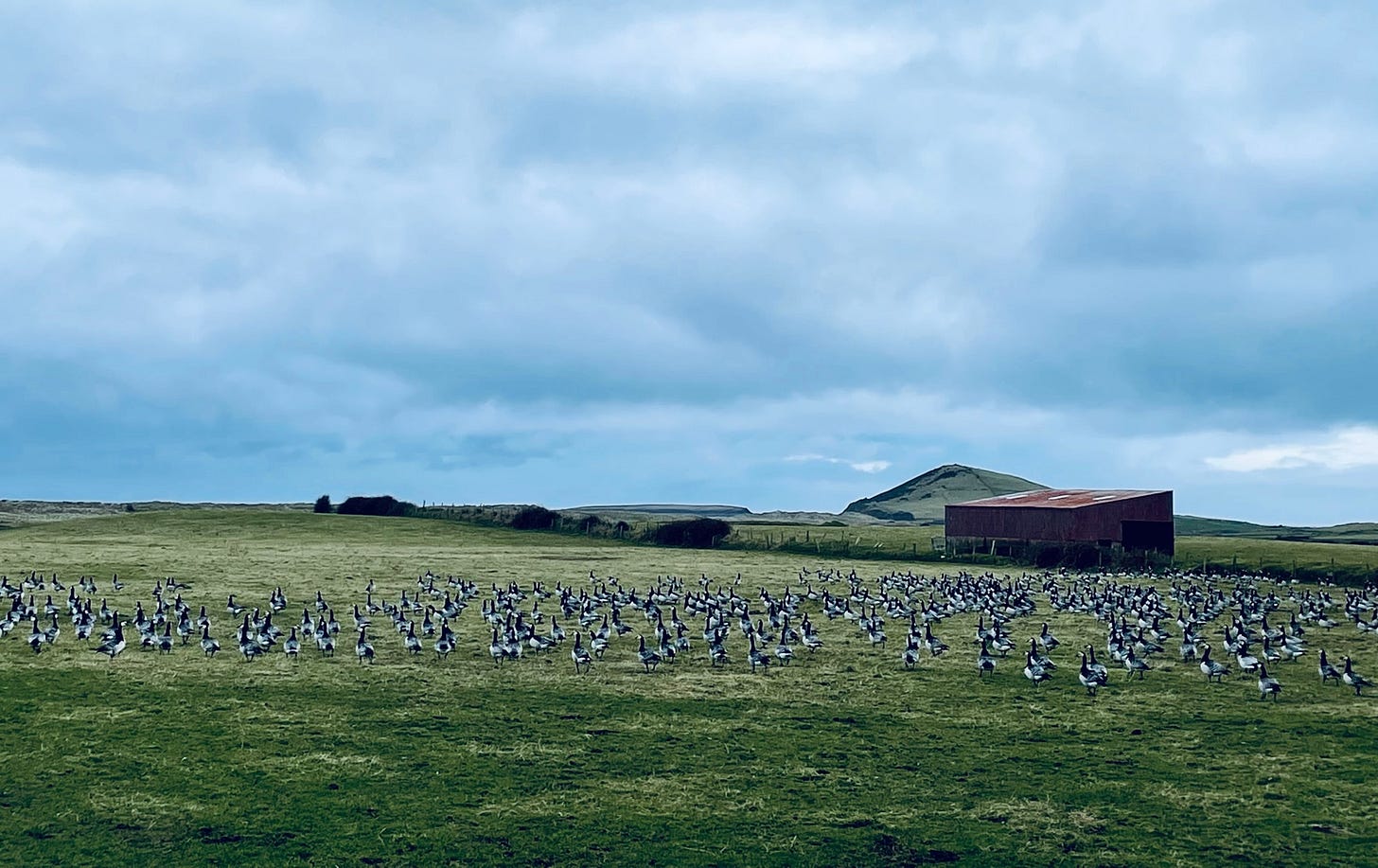Before we understood migration, we believed some wild and wonderful things. One theory involved the moon and the possibility of islands between here and there on which the birds overwintered. Another suggested birds such as fieldfares simply took on a winter plumage. There was a belief that cuckoos shape-shifted into hawks and swallows took to the water and turned fish.
This weekend we stumbled across the overwintering grounds of barnacle geese on the Raghly penninsula. The tidal mudflats attract two and a half thousand geese every October escaping the harsh winter in Greenland. The arrival of these geese was a mystery to our ancestors. Some believed they hatched from barnacles attached to tree trunks, others said they were the fruit of waterside trees. Irish clergy ate them during Lent, safe in the knowledge they were fruit, not flesh.
It is no less wonderful to me that the birds squabbling in the sand dunes behind Yellow Strand are preparing to travel 3000 km to their nesting ground. Thanks to modern science we know a lot about their pilgrimage, but there is enough mystery to keep us curious.
When a shimmering skein of geese appeared in the sky above us yesterday, we were awe struck. The monochrome wisp of birds headed out to sea with a huzza then withdrew like a whip and returned to the mudflats. Were they practising? Exercising? Or simply, like us, enjoying a bright spring day?
I am re-reading Michael Viney’s exceptional book A Year’s Turning. It is a lyrical nature journal written from a remote cottage a little further west of us. Here, he describes the barnacle geese:
They got up in an explosion such as I have never seen, a flickering eruption of black and silver between me and the sun. They broke into long chains, and circled away to the northern fields, barking and bugling.
I called out to them: 'You're beautiful!”
― Michael Viney, A Year's Turning
These moments, when we wonder, highlight our limitations and invite us to revere creation. We don’t, in fact, know it all. In Mary Oliver’s poem, Wild Geese, the call of the skein announces our place in the family of things. It is an offering, the beginning of a conversation, a prayer.
Surely, this is an antidote to despair?
There is still time to say farewell or You’re beautiful to the geese. If you’re near Strangford Lough, you will catch the brent geese before they up sticks and leave for Arctic Canada. This article will tell you where to find barnacle geese, if you’re in England, Scotland or Wales. And if you can make it to Sligo, follow the back roads to Yellow Strand and peep over the sand dunes for a truly unforgettable sight.
In the meantime, here’s a video I took of the skein heading seaward. May it inspire wonder wherever you are.
Happy Sunday x






Ahh - that video, what a treat!
‘Wondering’ as I watch the swallows in Gqeberha, SA. A beautiful, interesting piece, Bethany.